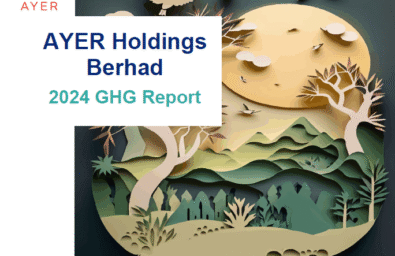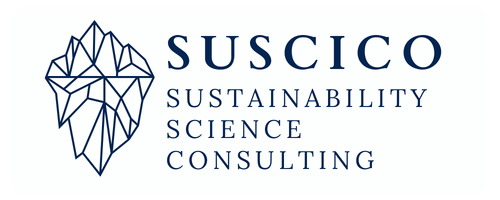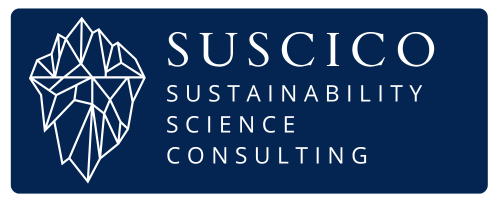AYER Holdings: GHG Accounting for Plantation and Construction IndustriesESG Reporting, GHG Emissions, and PCF Assessments

At SuSciCo, we specialize at GHG Accounting for Plantation and Construction companies and support Malaysian public-listed companies in achieving sustainability excellence. Effective Greenhouse Gas (GHG) accounting is not just about regulatory compliance—it’s a competitive advantage. Our recent work with AYER Holdings Berhad, a leader in both plantation and construction sectors, showcases our strength in delivering customized, data-driven solutions through a fully compliant GHG inventory report.
challenge
The Challenge: Complex GHG Accounting for Plantation and Construction – Emissions Across Sectors
AYER Holdings required a detailed 2024 GHG Inventory Report fulfilling Bursa’s requirements for PLC that covered:
- Scope 1 emissions (direct)
- Scope 2 emissions (electricity indirect)
- Scope 3 emissions (selected other indirect)
These emissions spanned plantations, real estate, and office operations. One of the key challenges was quantifying Scope 1 emissions from agricultural processes, especially emissions from fertilizer application in oil palm and durian plantations. This required applying sector-specific emission factors and accurate activity data to estimate nitrous oxide (N₂O) emissions from synthetic and organic fertilizers.
Another major challenge involved Scope 3, Category 1 emissions—upstream procurement of fertilizers and chemicals, which are significant contributors to the carbon footprint of plantation operations. Estimating these emissions required mapping detailed procurement records to life cycle emission factors and ensuring supplier data alignment with GHG Protocol Category 1 requirements.
Additionally, AYER Holdings manages large tracts of carbon-storing land, including oil palm estates, durian plantations, secondary forest, and undeveloped land covered with vegetation. Quantifying carbon stock across these land types was complex due to varying data quality, classification uncertainty, and the need to use default or estimated biomass values where local data was unavailable.
The goal was to meet international standards, namely the GHG Protocol Corporate Standard and ISO 14064-1:2018, while building internal capabilities for future ESG reporting.
solution
Scope of Work, Emission Sources, and Methodology
Our engagement with AYER Holdings covered the full development of a GHG inventory report for plantation and construction operations, compliant with the GHG Protocol and ISO 14064-1:2018. The scope of work included quantification of Scope 1 (direct), Scope 2 (indirect electricity), and selected Scope 3 (other indirect) emissions across multiple entities, including plantation estates, construction subsidiaries, undeveloped land, and corporate headquarters.
We mapped out key emission sources for each sector:
- Scope 1 emissions included fertilizer-related process emissions and fuel combustion in estate and construction operations.
- Scope 2 emissions resulted from grid electricity used at offices and facilities.
- Scope 3 emissions primarily involved upstream procurement (especially fertilizer and chemicals), commuting, and business travel.
Data collection covered utility records, procurement logs, transport data, and activity surveys. Special attention was given to the following complexities:
- Fertilizer application emissions (Scope 1) were estimated using IPCC emission factors accounting for direct and indirect N₂O emissions.
- Procurement emissions (Scope 3, Cat. 1) were calculated using two approaches: for fertilizer purchases, product-specific emission factors based on nitrogen content were used; for non-production-related purchases, a cost-based method aligned coded emission factors was applied.
- Carbon stock quantification covered over 4,370 hectares, including:
- 2200+ ha of oil palm and durian trees
- 2,000 ha of secondary forest
- 172 ha of vegetated undeveloped land
Carbon stock estimations followed IPCC 2006 guidelines using above-ground biomass factors for forests and age-specific biomass values for oil palm and durian. All emissions were reported in tCO₂e using GWP values from IPCC AR5. The inventory was built on GHG Protocol principles—ensuring transparency, relevance, and accuracy for stakeholder trust and future verification.
results
GHG Reduction Strategy for Construction and Plantation Divisions
Our roadmap focused on:
- Integrated Nutrient Management in plantations to cut fertilizer-related emissions.
- Sustainable Procurement Practices to reduce Scope 3 impacts in construction supply chains.
- Fuel Efficiency Initiatives: Vehicle optimization and biofuel options.
- Solar Energy Expansion: Ongoing investments in on-site renewable energy.
- Waste Management: Composting, segregation, and waste-to-energy options.
- Low-Carbon Mobility: Support for carpooling, flexible work, and digital meetings.
These measures align with both compliance goals and value creation for stakeholders.
Why SuSciCo for GHG Accounting for SMEs and PLCs?
SuSciCo’s success with AYER Holdings proves our ability to deliver end-to-end GHG accounting for plantation and construction companies. We help businesses:
- Improve emissions transparency
- Meet Bursa Malaysia and global ESG standards
- Identify cost-saving sustainability initiatives
- Train staff and suppliers for long-term performance
Want to strengthen your ESG performance with trusted GHG reporting? Contact Ildar Usmanov, COO of SuSciCo, at iusmanov[at]suscico.com.



